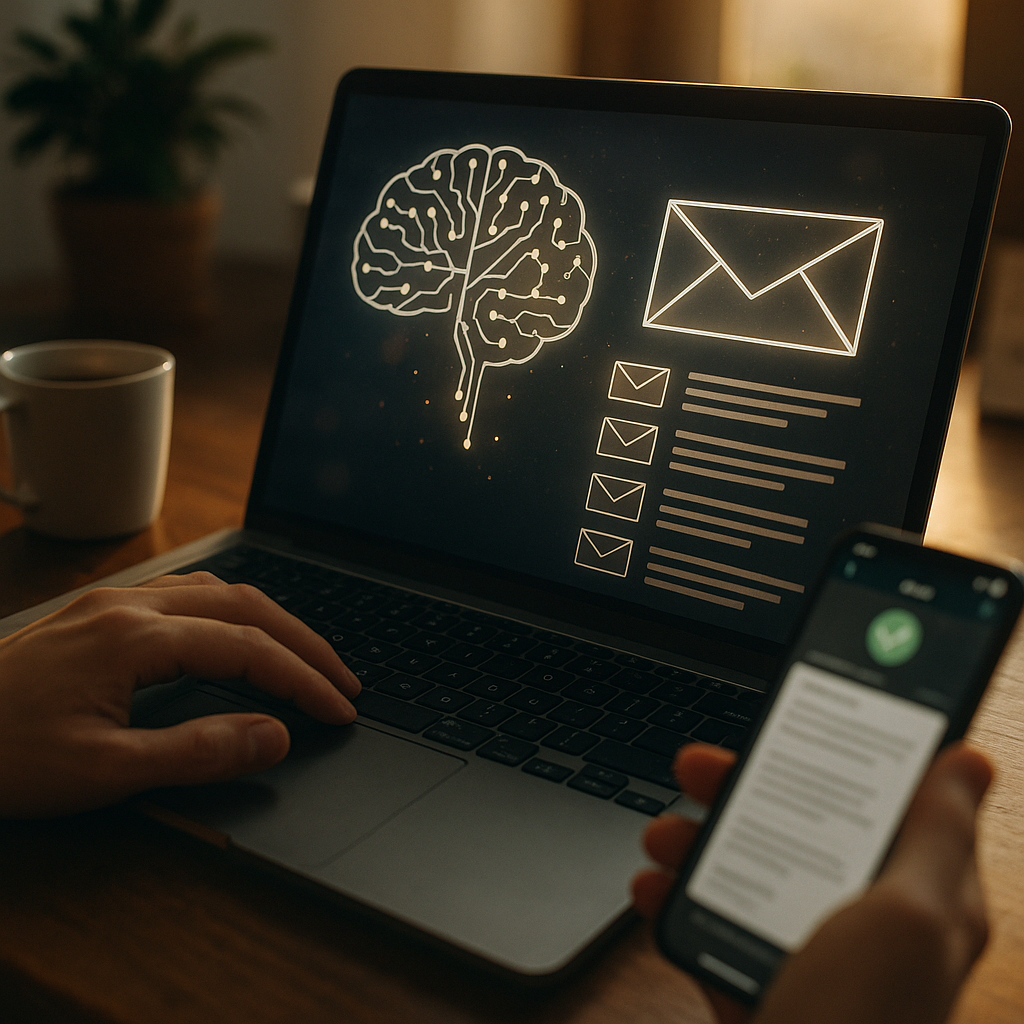Using AI to personalize your email campaigns based on user behavior is a game-changer for marketers looking to boost engagement and ROI in 2025. Harnessing artificial intelligence helps deliver content your subscribers actually want. Curious how to use AI for smarter, more tailored email marketing? Read on to discover expert insights and proven strategies.
Understanding Behavioral Email Campaigns with AI
Behavioral email campaigns use data on how users interact with your brand—such as browsing history, email opens, clicks, and purchases—to deliver highly relevant content. In 2025, artificial intelligence elevates this approach by analyzing vast user data in real-time, detecting patterns, and making personalized recommendations.
AI tools can segment audiences instantly based on actions and preferences, allowing marketers to go beyond traditional demographic targeting. For example, if a subscriber recently viewed running shoes, AI can queue up an email featuring those products or related accessories. This ensures every email feels custom-tailored, significantly increasing the chances of conversion.
Leveraging AI for Audience Segmentation in Email Marketing
Advanced segmentation is the cornerstone of successful personalized email campaigns. Using AI-driven tools, marketers can move from broad audience buckets to granular segments based on:
- User purchase history
- Engagement frequency and recency
- Preferred browsing categories
- Cart abandonment behavior
- Product review and feedback patterns
This level of precision helps craft content that resonates with each segment. For instance, AI can automatically identify subscribers interested in eco-friendly products and trigger campaigns featuring sustainable offers. These hyper-targeted messages are more likely to capture attention and motivate action, improving open and click-through rates.
Dynamic Content Personalization via Machine Learning
Machine learning algorithms enable dynamic content personalization by continuously learning from user interactions. This means emails can update in real-time, displaying product recommendations, personalized discounts, or relevant articles based on recent behavior.
For example, a customer who clicked on a blog post about healthy recipes last week and browsed juicers yesterday might receive an email with a discount on a top-rated juicer. AI systems like this reduce guesswork and automate content curation at scale, saving time while increasing relevance for every subscriber.
Optimizing Send Times and Frequency with Predictive AI
Send time optimization can greatly enhance engagement rates. Predictive AI analyzes each subscriber’s behavior, such as when they typically open emails or complete purchases, to determine the ideal time and frequency for delivery.
In 2025, leading email platforms use AI to automate send schedules, sending personalized messages at the moment each user is most likely to engage. This personalization reduces unsubscribes, avoids email fatigue, and maximizes overall campaign performance. Automated A/B testing can further fine-tune these strategies, using continuous learning loops to improve results over time.
Enhancing Campaign Performance with Real-Time Analytics
AI-powered email marketing platforms offer deep, actionable insights through real-time analytics. Marketers can:
- Monitor individual and segment engagement patterns
- Identify content that drives conversions
- Quickly detect and address deliverability issues
- Adapt campaign strategies based on live performance data
These analytics empower data-driven decisions, helping marketers refine their personalization strategies, allocate budgets more effectively, and justify ROI to stakeholders. Continuous feedback loops ensure your campaigns evolve with changing user preferences, delivering measurable business value.
Building Trust and Compliance: Privacy-Centric Personalization
User trust is paramount in 2025’s privacy-focused digital environment. AI-driven personalization must respect regulations like GDPR and prioritize transparency. Leading solutions employ advanced encryption and anonymization to protect subscriber data, and marketers should always provide clear options for users to control their information and email preferences.
By pairing cutting-edge AI personalization with robust privacy practices, businesses foster loyalty and build long-term relationships founded on respect and trust.
FAQs: Using AI to Personalize Your Email Campaigns Based on User Behavior
-
How does AI improve email campaign personalization?
AI analyzes user interactions in real time to predict interests and preferences, enabling marketers to deliver relevant content, optimal send times, and compelling offers automatically, resulting in higher engagement and conversion rates.
-
What types of user behavior does AI analyze for email personalization?
AI examines behaviors like email opens and clicks, browsing and purchase history, product views, cart abandonment, and even customer feedback to build accurate personalization models.
-
Is using AI for email personalization compliant with data privacy laws?
Yes, when implemented with best practices. Reputable email marketing platforms use AI within regulatory frameworks, ensuring user data is protected and allowing recipients to manage their preferences transparently.
-
Can small businesses benefit from AI-powered email personalization?
Absolutely. AI-driven tools are now accessible to businesses of all sizes. They automate segmentation, optimize send times, and curate content, making sophisticated personalization achievable without a large marketing team.
-
How do I get started with AI email personalization?
Begin by choosing an email platform with built-in AI features. Integrate your data sources, define campaign goals, and start with simple behavioral triggers. Analyze results closely and iterate your strategies based on real-time performance data.
In summary, using AI to personalize your email campaigns based on user behavior is the key to effective, results-driven marketing in 2025. Embracing data-driven personalization enhances relevance, builds trust, and ensures your campaigns outperform the competition. Start leveraging AI to connect authentically—and profitably—with your audience.
